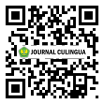ANALYSIS OF VOCABULARY MASTERY OF MENTALLY RETARDED CHILDREN 9 YEARS OLD AT SLB NEGERI 1 RANAH PESISIR
Keywords:
language acquisition, vocabulary, mental retardation.Abstract
This research discusses language acquisition in mentally retarded children at school and has the purpose to examine the mastery of language and vocabulary as well as sentence structures used by mentally retarded children in 9-year-old children of SLB Negeri 1 Ranah Pesisir. This research is qualitative, which contains a description of the child's language and vocabulary mastery and its presentation. vocabulary and sentence structure used by mentally retarded children. The data collection methods used in this research are observation and interview methods. The techniques used in this research are skillful listening techniques, and advanced recording and note-taking techniques. The population in this research were mentally retarded children and teachers who taught at SLB Negeri 1 Ranah Pesisir. The results of this research were Raju, a child with severe mental retardation, was able to understand 40 basic vocabularies from a total of 300 basic vocabularies provided, while Dayat, a mild mentally retarded child, was able to understand 200 basic vocabularies from a total of 300 basic vocabularies provided. This is natural because indeed the ability of children with severe and mild mental retardation is of course different, especially in language. The child's "ability to understand" is reflected in the IQ of each child, if the IQ for mild mental retardation is between 55-60 to 80, then severe mental retardation ranges from 15-20 to 25-30, so the ability to understand this basic vocabulary is different, Raju and Dayat.
References
Basuni, M. (2012). Pembelajaran Bina Diri pada Anak Tunagrahita Ringan. Jurnal Pendidik an Khusus, 9(1), 12–22.
Chaer, A. (2015). Psik olinguistik?: Kajian Teoretik. Jakarta: Rineka Cipta.
Fatmawati, S. R. (2015). Pemerolehan Bahas a Pertama Anak menurut Tinjauan Ps ikolinguis TIK. Jurnal Lentera, 18(1), 63–75.
Gross, U., M., M. (2005). Exceptionally gifted children, second edition. London: Taylor &
Francis.
Haryeti, E., & et.al. (2013). Meningkatkan Keterampilan Membuat Palai Rinuak Melalui Metode Latihan pada Anak Tunagrahita Ringan. E- Jupek Hu (Jurnal Ilmiah Pendidik an Khusus), 2(3), 537–547.
Hasanah. (2018). Tingkat Fleksibilitas Siswa Tunagrahita Ringan, Tunagrahita Sedang, Dan Down Syndrome Kelas 3, 4 Dan 5 Di Slb Negeri 1 Bantul. Universitas Negeri Yogyakarta.
Hidayah, Y. F. N. (2013). Pemerolehan Kos akata Anak Us ia 3–6 Tahun di PG-TK Ais yiah Bhus tanul Atfhal 25 Wage-Sidoarjo. Jurnal Sk Riptorium, 1(2), 143–153.
Kustawan, D. 2013. Penilaian pembelajaran anak berkebutuhan khusus. Jakarta : Luxima Metro Media
Somantri, S. (2007). Psikologi Anak Luar Biasa. Bandung: PT. Refka Aditama.
Downloads
Published
Issue
Section
License
Copyright (c) 2022 Dela Syafira, Agustina

This work is licensed under a Creative Commons Attribution 4.0 International License.









